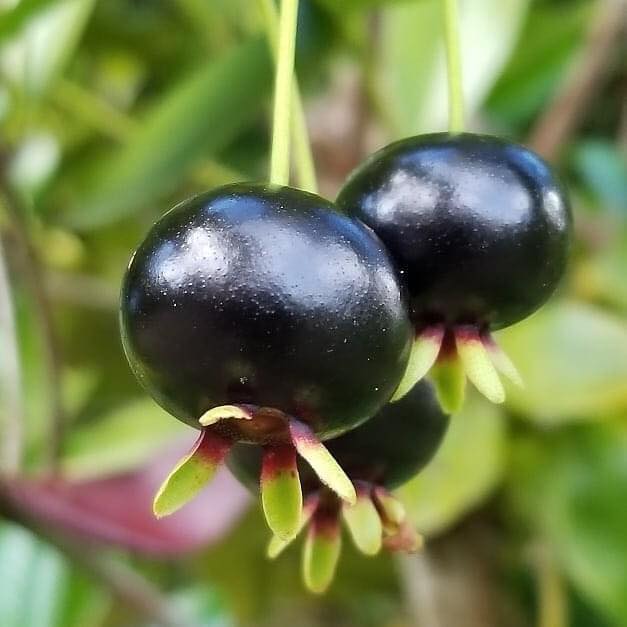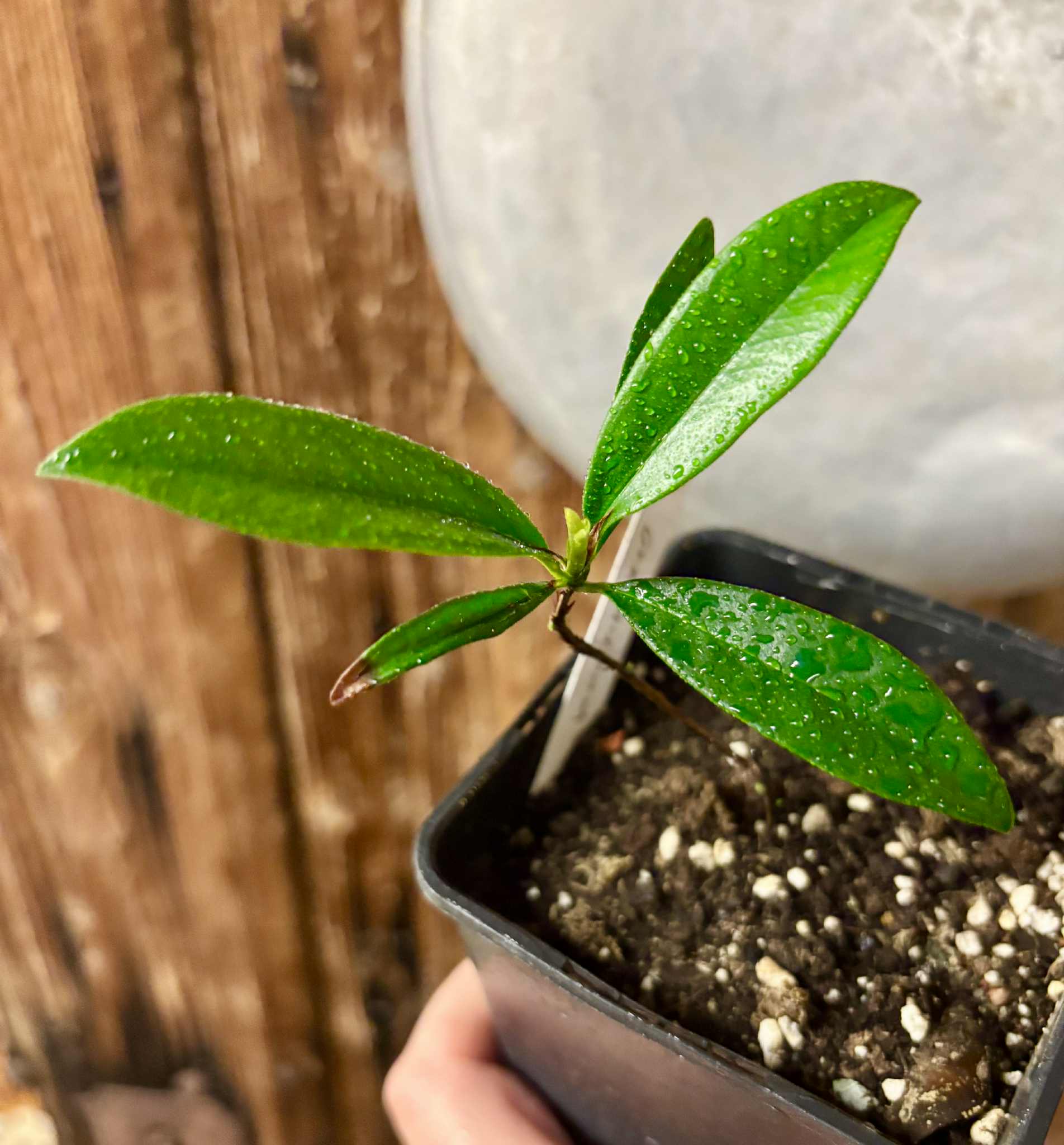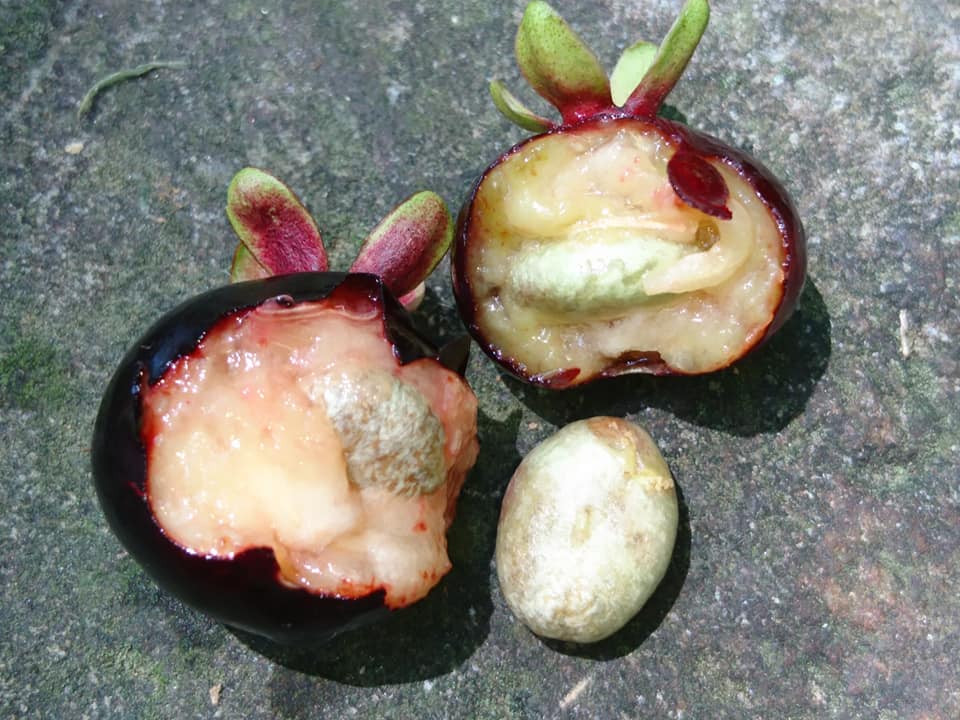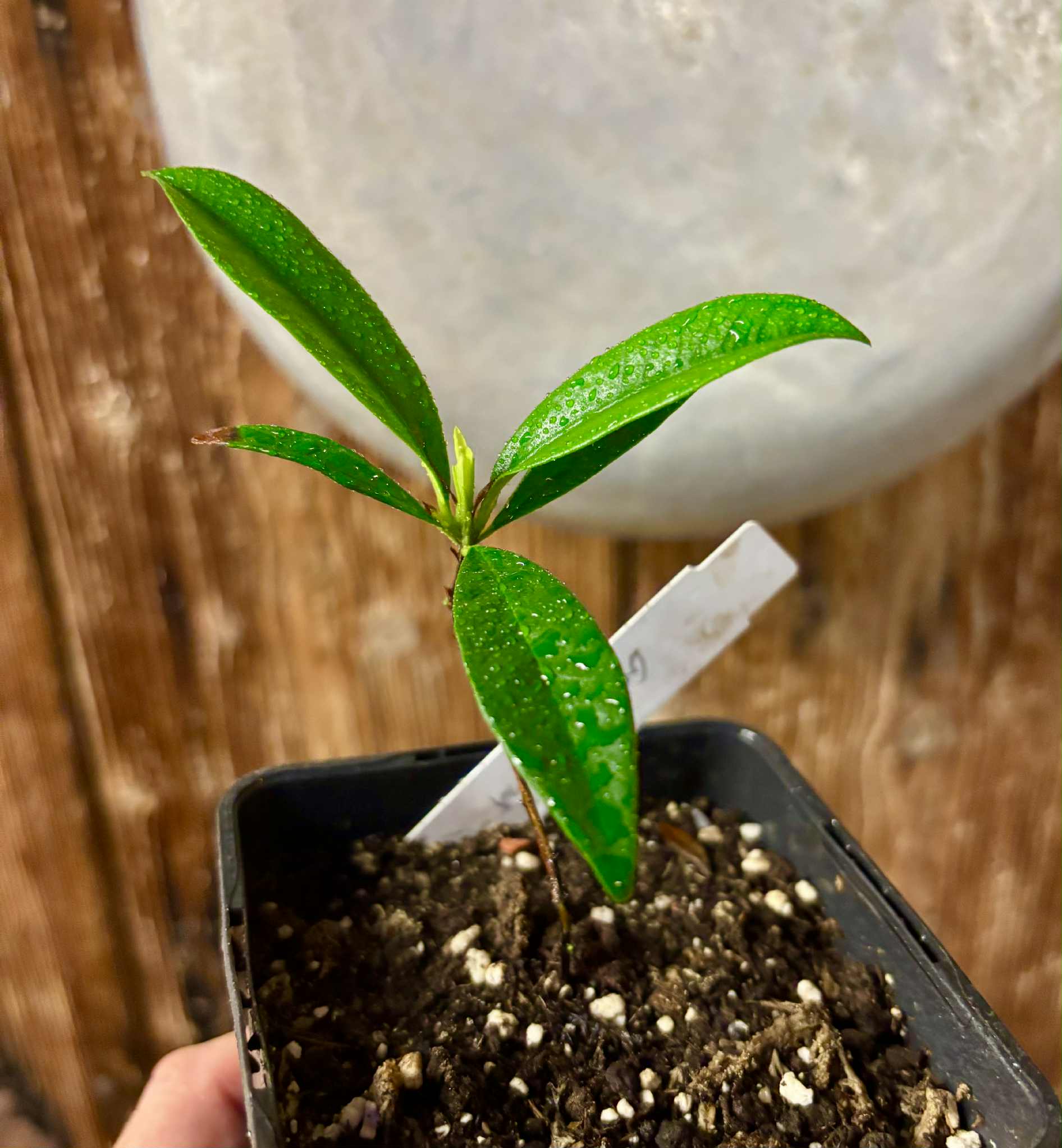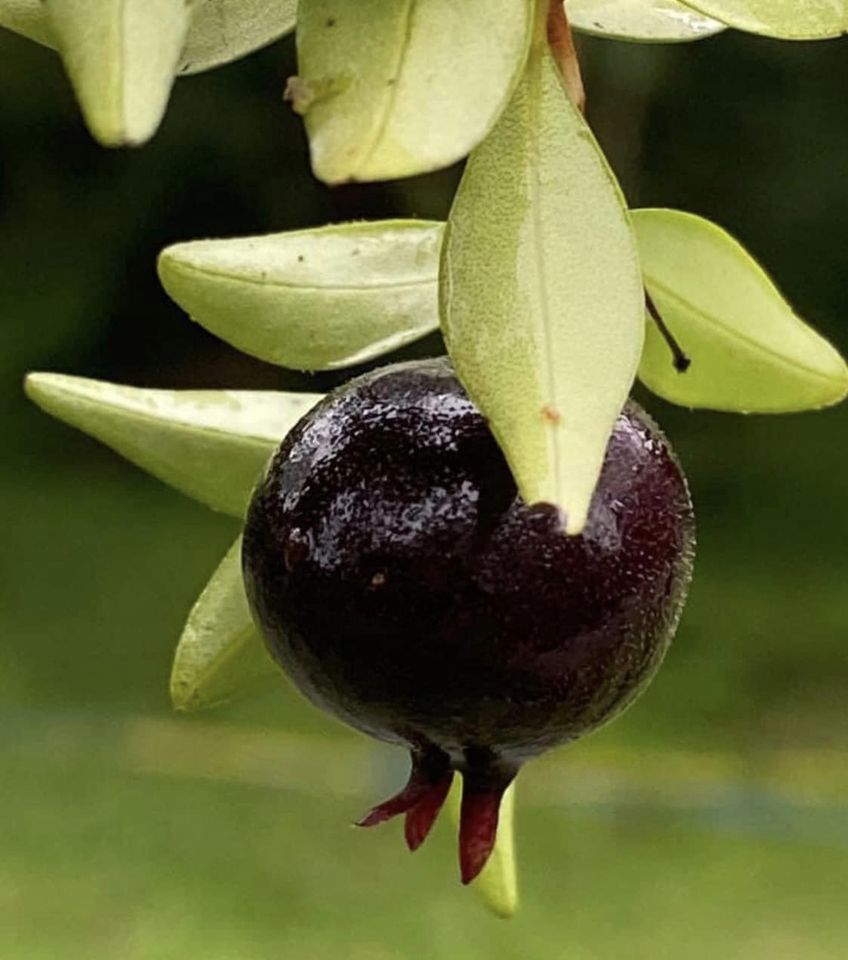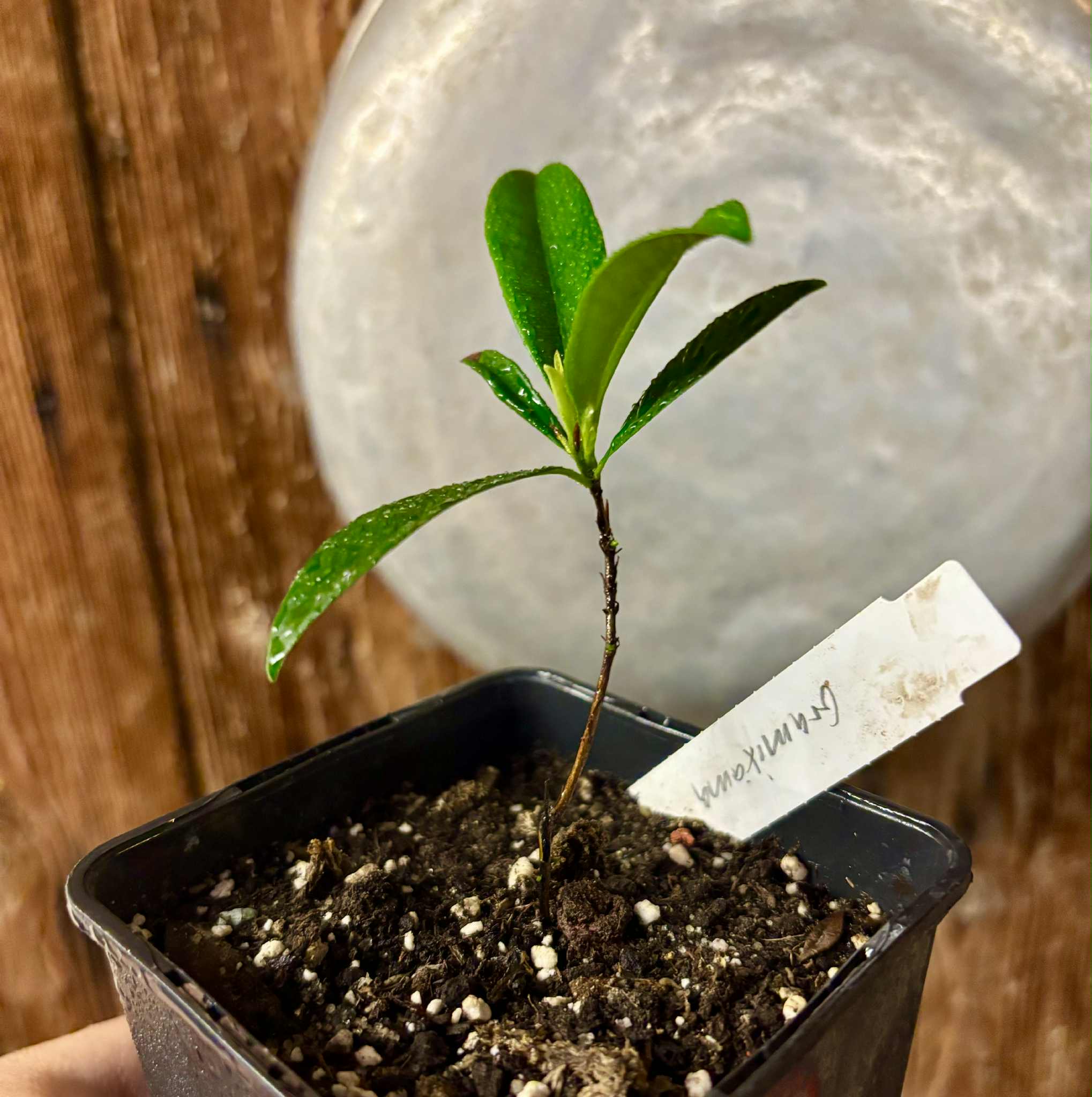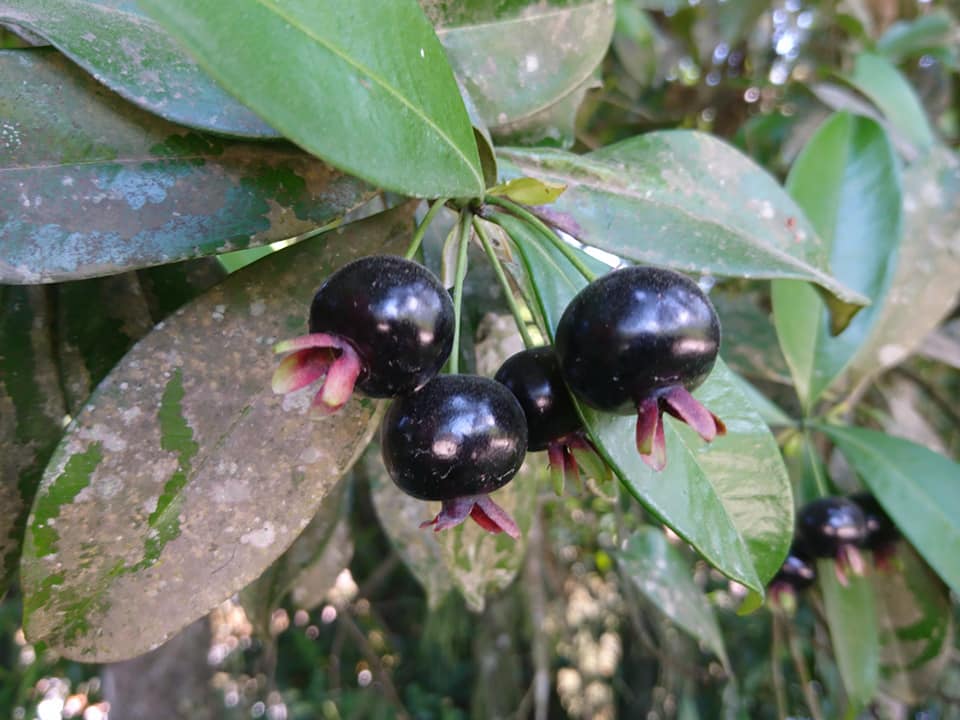Grumixama (Eugenia brasiliensis) - 1 potted plant / 1 getopfte Pflanze
13,00 €*
% 17,00 €* (23.53% saved)
Content:
1
Available, delivery time: 2-5 Tage
Product number:
EI10389
product information "Grumixama (Eugenia brasiliensis) - 1 potted plant / 1 getopfte Pflanze"
Eugenia brasiliensis - Grumixama
Family / Familie: Myrtaceae
origin from / Herkunft: Brasil / Brasilien
Climate / Klima: temperate to warm (10-25C / 50-77F) / gemäßigt bis warm (10-25C / 50-77F)
Taste / Geschmack: very good taste / sehr guter Geschmack
you buy / sie kaufen: 1 potted plant / 1 getopfte Pflanze
Delivery EU only
Grumixama comes from the Tupi language and means “fruit that leads to the mouth to eat”.
This is a clear indication of good taste.
It is a fairly easy species to grow.
The leaves are a beautiful dark green and slightly leathery.
This tree comes from Brazil and is found there from Minas Gerais to Rio Grande do Sul. He grows to around 5m tall.
Of course, it can be trimmed and kept smaller without any problems.
The fruits are tasty and are reminiscent of a mix of berries with a very exotic note.
They are approximately 2.5cm in diameter.
This plant is self-fertile and produces fruit on its own.
Adult specimens suffer frost damage from -5 degrees.
This means that although this plant can tolerate short-term frost, it is better to overwinter at at least 10 degrees.
A sunny to semi-shady place is suitable as a location.
Grumixama kommt aus der Tupi Sprache und bedeutet „Frucht die zum Essen zum Munde führt“.
Das ist ein deutlicher Hinweis auf einen guten Geschmack.
Es ist eine ziemlich einfach zu ziehende Art.
Die Blätter haben ein schönes dunkelgrün und sind leicht ledrig.
Dieser Baum stammt aus Brasilien und kommt dort von Minas Gerais bis Rio Grande do Sul vor. Er wird ca. 5m groß.
Selbstverständlich kann er ohne Probleme beschnitten und kleiner gehalten werden.
Die Früchte sind schmackhaft und erinnern an einen Beerenmix mit sehr exotischer Note.
Sie sind ca 2,5cm im Durchmesser.
Diese Pflanze ist selbstfertil und fruchtet allein. Ausgewachsene Exemplare erleiden Frostschäden ab -5 Grad.
Das bedeutet, dass diese Pflanze zwar kurzfristig Frost verträgt aber dennoch besser bei mindestens 10 Grad überwintert werden sollte.
Als Standort eignet sich ein sonniger bis halbschattiger Platz.
Family / Familie: Myrtaceae
origin from / Herkunft: Brasil / Brasilien
Climate / Klima: temperate to warm (10-25C / 50-77F) / gemäßigt bis warm (10-25C / 50-77F)
Taste / Geschmack: very good taste / sehr guter Geschmack
you buy / sie kaufen: 1 potted plant / 1 getopfte Pflanze
Delivery EU only
Grumixama comes from the Tupi language and means “fruit that leads to the mouth to eat”.
This is a clear indication of good taste.
It is a fairly easy species to grow.
The leaves are a beautiful dark green and slightly leathery.
This tree comes from Brazil and is found there from Minas Gerais to Rio Grande do Sul. He grows to around 5m tall.
Of course, it can be trimmed and kept smaller without any problems.
The fruits are tasty and are reminiscent of a mix of berries with a very exotic note.
They are approximately 2.5cm in diameter.
This plant is self-fertile and produces fruit on its own.
Adult specimens suffer frost damage from -5 degrees.
This means that although this plant can tolerate short-term frost, it is better to overwinter at at least 10 degrees.
A sunny to semi-shady place is suitable as a location.
Grumixama kommt aus der Tupi Sprache und bedeutet „Frucht die zum Essen zum Munde führt“.
Das ist ein deutlicher Hinweis auf einen guten Geschmack.
Es ist eine ziemlich einfach zu ziehende Art.
Die Blätter haben ein schönes dunkelgrün und sind leicht ledrig.
Dieser Baum stammt aus Brasilien und kommt dort von Minas Gerais bis Rio Grande do Sul vor. Er wird ca. 5m groß.
Selbstverständlich kann er ohne Probleme beschnitten und kleiner gehalten werden.
Die Früchte sind schmackhaft und erinnern an einen Beerenmix mit sehr exotischer Note.
Sie sind ca 2,5cm im Durchmesser.
Diese Pflanze ist selbstfertil und fruchtet allein. Ausgewachsene Exemplare erleiden Frostschäden ab -5 Grad.
Das bedeutet, dass diese Pflanze zwar kurzfristig Frost verträgt aber dennoch besser bei mindestens 10 Grad überwintert werden sollte.
Als Standort eignet sich ein sonniger bis halbschattiger Platz.

